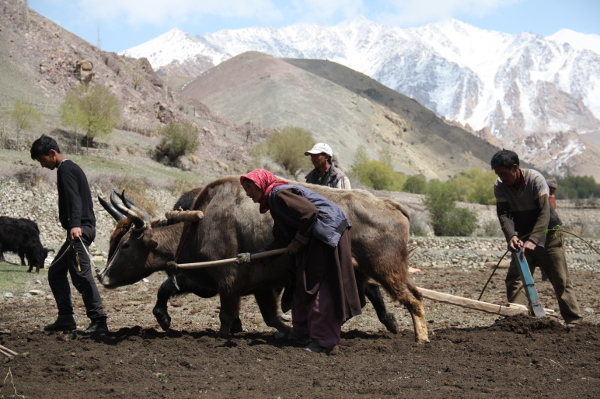Realizing the importance of the Indian Himalayan region and recognizing the need to study its ecology, Union Minister for Environment, Forest and Climate Change, Shri Prakash Javadekar approved the proposal of setting-up of a New Regional Centre of the GB Pant Institute of Himalayan Environment & Development at Ladakh.
As the setting up of the Centre is being envisaged concurrently with Ladakh being designated as a separate Union Territory (UT), the Institute is expected to have an institutional linkage with the Ladakh Administration right from its inception. This association would be mutually beneficial (i) to the Institute through the facilitation of UT government for setting-up of the centre (i.e., appropriate space for work initiation, land for own campus and technology park/demonstrations) and (ii) aligning the centre’s activities with priorities and needs of newly created UT.
The setting-up of this centre would ensure Institute’s Research & Development outreach in entire Trans Himalayan zone of Indian Himalaya by way of targeting following objectives:
• To promote alternative and innovative livelihoods for climate change vulnerable cold-desert communities.
• To facilitate conservation of critical/important cold desert habitats and biodiversity.
• To strengthen and establish approaches for addressing issues of water scarcity and
• To foster climate smart communities in the trans-Himalayan landscape
The GB Pant National Institute of Himalayan Environment and Sustainable Development with its Headquarters at Kosi-Katarmal (Uttarakhand) and Regional Centres (RCs) as Himachal RC at Mohal-Kullu, Himachal Pradesh. (to cover J&K and H.P.), Garhwal RC at Srinagar (to cover Uttarakhand), Sikkim RC at Pangthang, Gangtok (to cover Sikkim and W.B. hills), Northeast RC at Itanagar (to cover remaining NE States) caters to environment management, conservation of natural resources and policies for sustainable development of communities in the Indian Himalayan Region.
It is noteworthy to mention that the Trans Himalayan landscape has most of its area lying above 3,000 Mean sea level (msl) and is characterized by extreme cold climate, minimal rain (9-10cm annual, more than 300 sunny days) and with very sparse vegetation. This landscape, most often, is also termed as clod desert. The region is endowed with rich diversity of culture, unique biodiversity elements and significantly large wetlands/water bodies (lakes). The Centre will help in better understanding of its landscape components and developing strategies and implementation plans for addressing issues of environmental conservation, people’s livelihoods and sustainable development under changing scenario.
Source: IBEF
Image Courtesy: Ourbigfamilyadventure
You may also like
-
Trade Connect E-platform For Exports Is Single Window, Fast, Accessible And Transformational: Shri Piyush Goyal
-
Five Successful Years of Pradhan Mantri Kisan Maandhan Yojana (PM-KMY)
-
Global Study by Leading Experts : Swachh Bharat Mission Drives Significant Reductions in Infant Mortality Rates in India
-
India Graphene Engineering and Innovation Centre (IGEIC) Under the Vision of Viksit Bharat@2047 Launched
-
Government Launches Vishvasya-Blockchain Technology Stack
